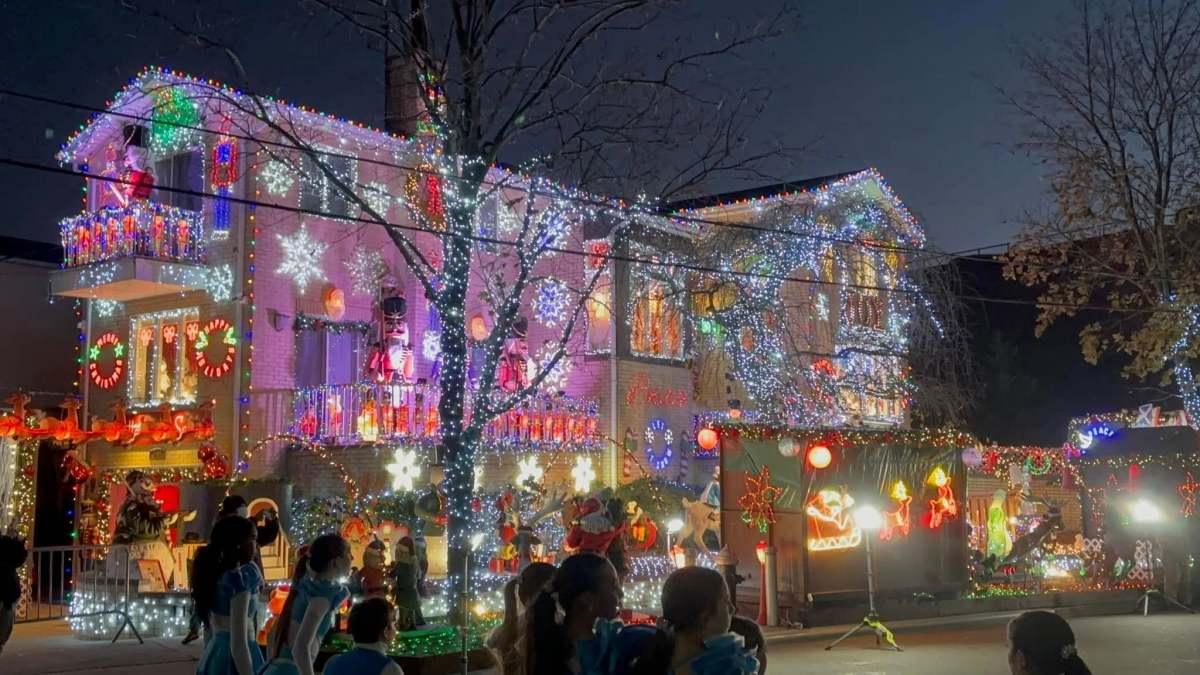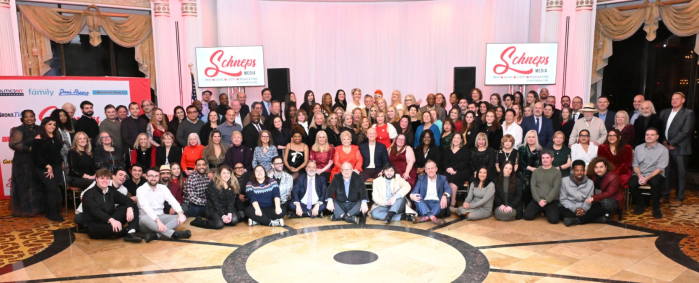By Tim Lavin
L.M.C.C.’s new leader arrives at a crucial time
At the Equitable Building, the WWI-era towering skyscraper at 120 Broadway, there is something special happening on the 31st floor. It strikes you as soon as you step off the elevator and notice the quotes scrawled in colored chalk all over the walls. They come from artists, writers, philosophers and, one — “Art is making something out of nothing and selling it”—comes from Frank Zappa.
It creates an interesting mosaic, a conversation among serious and creative thinkers about the function and importance of art. The Lower Manhattan Cultural Council, the non-profit arts organization that inhabits the floor, has been the voice of downtown in that conversation for the past three decades. And as the neighborhood redefines itself in the coming years, the council’s leadership will need to make hard decisions about how to ensure that their voice is still heard—and about what, exactly, it will say.
They’ve also just received a $5 million grant—a fortune in the world of arts philanthropy—from the 9/11 Fund. New President Healy intends to see that it is put to good use and with that in mind believes that the area’s current period of flux can work to their advantage.
“Nobody’s really sure what the downtown of the future will look like,” he said one recent evening, while sitting in his small, spare office, a contrast to the tropical effusiveness of the waiting room decor. “There’s a lot of directions it can go in, it’s an undefined space right now. But we think we can help shape it.”
At 42, Healy’s already had an accomplished career in the arts. He’s a well-regarded poet and sits on the board of several arts publications. He opened one of Chelsea’s first contemporary art galleries, and, before that, ran a company that helped arts organizations with PR and management. In some ways, however, Healy followed an unlikely path to the top of the LMCC.
Growing up on a dairy farm on a dirt road in Cooperstown, NY, art was not a big topic around the house. “I think my first visit to a museum was my second week in college,” he said. He added that he is not a fine artist either. “I can’t even draw a stick figure,” he laughed.
Being part of an organization, rather than owning it, is also new for him. “This is the first time in my life I’ve gotten a paycheck that wasn’t from myself,” he said.
Healy shaves his head clean, smiles easily and dresses sharply. He harbors great optimism and, having worked in the art world for so long, understands the needs of artists well. A top priority as he sees it is an ability to develop financial independence, and concedes that artists often merit their reputation for dubious financial acumen. As a result, part of the council’s mission is to provide not just capital but the means of producing it—business training—to their constituents.
Last month, for instance, the L.M.C.C. helped produce a seminar called “Money, Management and Marketing,” along with Seedco, a non-profit that helps small businesses. It included discussions on tracking down affordable real estate, training employees, and marketing ideas—the practical side of life in the arts. More than 150 people attended, from dance studios, architecture firms, theaters.
“Really the whole range of arts and arts-related businesses,” said Sarah Eisinger, who coordinated the conference for Seedco. “We wanted to work with an organization that had a presence and had a constituency downtown in the arts and that’s really the LMCC. We think of them as sort of the industry experts, the people with the knowledge of the arts in the field.”
Most artists maintain, however, that their most pressing need is for space. For the last eight years, the L.M.C.C. has operated a residency program that loans studios to artists for six months at a time. “I would say our residency program is our crowning achievement,” said Healy. “That’s the core of what we do.” Now housed on the eighth floor of the Equitable Building—in space donated by Silverstein Properties, the building’s owners—the residency hosts 12 artists of varied experience, discipline and vision. Their workshop is completely bare—the floors are concrete and a profusion of electrical wiring hangs lazily from the unfinished ceiling. The bay for each artist consists of two unadorned walls and a window, with a communal area in the center.
“The L.M.C.C. provides a large space, and a fine space, but they’re really good in providing a context—seeing fellow artists,” said Oona Stern, one of the current residents. “They make an effort so that we can interact with each other.”
The idea of semi-private residency, with each studio open to the others, is uncommon. “It helped me evolve my sense of what a site could be,” said Christopher Ho, a former resident. “I started thinking of a site as a community, a collection of voices. We had 13 artists. It wasn’t a coherent group of people, but in a way a community is not a coherent group of people. It’s a multiplicity of voices—cacophonous, sometimes overlapping and sometimes arguing. That’s the model of the L.M.C.C.”
Matt Bua and Jesse Bercowetz are two voices in the current cacophony. They’ve created a project called “Under Island,” which involves exploring and excavating parts of the East River from a giant yellow homemade raft. The two are bright and affable, their enthusiasm is palpable and the miniature renderings of their projects that they’ve created—three-dimensional collages of daunting complexity—are interesting works of art in themselves.
Oona Stern has two large works planned, one that she’ll create on-site and one that will be displayed above a public street. All three artists credit the L.M.C.C. for its willingness to listen to unusual ideas. “They’re very receptive of artwork beyond an object in a gallery,” said Stern. “I like that. I like site-specific art because it’s not so rarefied.”
And the residency’s address on Broadway, with its proximity to Wall Street and the financial hub of the world, makes for a site that is, in many ways, appealing artistically, said the residents. “It’s not the normal place you’d find yourself working in,” said Bercowetz. “Usually artists end up in some industrial low-rent area. But life around here, with the vitality, the architecture—it’s inspirational.”
“The LMCC puts you in the most intense part of the most intense city,” said Ho. “The location is so unique that it ends up reflecting on the art that’s produced.”
The kind of art that gets produced—in Ho’s case, 12 industrial fans blowing hundreds of shredded stock pages from the Wall Street Journal into a miniature tornado—is unlikely to appear in a museum, said Healy. Traditionally, the LMCC’s philosophy has been to grant small amounts of money to many small organizations, and despite the generous grant from the 9/11 Fund, Healy expects this to continue. “The hard part,” he said, “is to find younger, newer, or just out of the mainstream artists who, if you gave them 500 bucks, they can put on a show, they can make some work that they wouldn’t have been able to do before. That’s our side to it.”
There is also a new “Swing Space” program underway with L.M.C.C. working with area building owners to make temporarily vacant space available to artists and small arts groups on a free or reduced cost basis. Storefronts and upper floors can be used for periods ranging from a few months to over a year, depending on availability.
Also, a 10,000 square foot space at 133 Beekman in the South Street Seaport was donated by General Growth Properties. With wood floors, private dressing rooms and a two-story performance space it is currently housing “MOVE: 133 Beekman,” L.M.C.C.’s first performing residency program.
But the L.M.C.C. sees itself as more than an advocacy group for artists. It also hopes to revitalize downtown, using arts programs as a vanguard. “Any place that needs an injection, people look for artists to do that,” said Bercowetz. “Down here, there’s space, there’s a need for art. A lot of people and businesses don’t think of it. L.M.C.C. can say, ‘Hey look at these artists. They do have a lot to offer and they do it for free, basically.’”
As part of this effort, the council will be offering diverse programs in upcoming months, from a series of poetry and story readings, to “Downtown Digital Futures,” which will explore “new technologies, art and the urban environment,” to “Harlem is Downtown,” a year-long project that will bring artists, musicians, activists and historians from Harlem downtown. “Our commitment is to a whole spectrum of artistic experience,” said Healy, “and that means programs for every downtown audience, from children to older people, from things that will be very popular to public audiences to things that are going to seem off beat to some people.”
Appreciating art is, of course, always a subjective undertaking. And governments, of course, abide subjective evaluations of how their tax dollars are spent with great trepidation. Since the L.M.C.C. gets most of its money from the state and the city, potential conflict inheres in their operation: how can Healy and his 25 colleagues—art enthusiasts all—reconcile their views of what makes good art with what the public may prefer to see? “We want our art to be something everybody can engage with. But that doesn’t mean we don’t do sometimes difficult or unusual or strange things,” he said. “But part of our whole mission is to get art into the streets, to have it happen on corners and buildings and storefronts. What we do not have is a museum or theater where you pay a ticket. Our idea is to offer art that is free and art that comes to get you, whether you’re getting out of the subway or you’re going to lunch or whatever you’re doing.”
Healy likes to tell a story to illustrate his idea of the L.M.C.C.’s public role. Early last August, TV news crews converged in front of Federal Hall, near the New York Stock Exchange. The federal government had issued a new terrorist alert indicating that the exchange, along with other high-profile financial outfits, was a primary target of Islamic extremists. A union protest in the same area added dozens of loud voices to the everyday Wall Street din of traders and tourists.
On the same day, a troupe of eight dancers sponsored by the council performed on the hall’s front steps. “Suddenly at noontime, with jackhammers and bullhorns and people having lunch and just regular chaos, there became this hush over a crowd of thousands of people and they stopped to watch these dancers,” Healy said. “Nobody paid a ticket to sit in a darkened theater to watch them. But that to me was a success.”
WWW Downtown Express



































